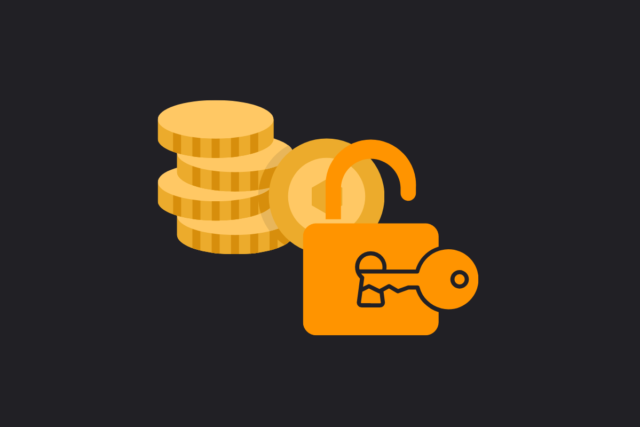Artificial intelligence yes or no? Using it today, and using it in the near future when systems, models and algorithms will be much more integrated than today in applications, platforms, industrial and production processes and so on, will it be convenient for us or not? Difficult to give a similar answer while what many consider a decisive technology for our recent history as much as the internet itself is taking shape before our eyes. While the wars of position are consumed over the fate of our future and users, disoriented, try to come to terms with it. To understand what it is, if behind the AI there is not a new, great risk for the stability of the social system as some catastrophists explain or, for now, if they are tools that can only help us. To understand something more we have put together five advantages and five disadvantages of the use of AI today and in the medium term.
The advantages
Efficiency and speed
An advantage of artificial intelligence systems, both in terms of language models and algorithms that perform the most diverse tasks, is their ability to process information at surprising speeds and with an averagely high precision, at least for the moment. This means that for example the jobs that require the collection and analysis of large amounts of data they can be performed much more efficiently than human labor. AI can also automate repetitive and boring tasks, thus freeing workers from monotonous tasks and allowing them to focus on more creative and challenging tasks.
Improvement of the quality of work
Artificial intelligence can help improve the quality of work in many sectors, such as medicine and the scientific researchL’agriculture and the industrial production. And, after all, he’s been doing it for years. The boom of the so-called LLMs has only made visible what has been done for some time in an industrial and research key. For example, AI can help identify illnesses or health conditions before they become serious, thus improving the chances of early intervention and recovery. In agriculture, AI can be used to identify crops that need more attention, thus providing a way to improve field yields and increase production while limiting the use of chemicals. In manufacturing, AI can help identify problems in assembly lines and prevent breakdowns or disruptions.
Personalization
AI can be used for customize the services and experiences of users, whatever they are. For example, websites can use AI to suggest products or services based on customers’ preferences or assist them in a truly effective way compared to what mundane first-generation chatbots have done up to now. In general, everything that digital services suggest to us today can be tailor-made in an even more precise and creative way.
Saving time and money
Artificial intelligence systems, which will then materialize (as is already happening, from Shopify to Expedia, as we have seen) within apps, platforms and search engines, can help save time and money. For example, AI can better automate lengthy and time-consuming processes like billing and accounting better than today. AI can also be used to reduce costs in manufacturing by identifying ways invisible to common data or stream analytics to improve efficiency and reduce waste.
New job opportunities
If it is true that the use of artificial intelligence will wipe out various types of jobs, it is far more probable that – as in industrial automation – will complement more trained roles. Not only that: it will create new job opportunities: it can be used to develop new applications and services, to support workers, improving their productivity and allowing them to focus on more creative tasks, pushing towards the retraining of the workforce and its other areas. Of course, however, the risks remain high.
The disadvantages
Replacement of workers
As mentioned, one of the main disadvantages of artificial intelligence, once deeply integrated into platforms, production processes and particular areas, is the risk of eat up an indefinite number of jobs. For example, AI can automate tasks that were previously performed by human workers, a concern in industries where manual labor is still prevalent. But the creative sphere is also at great risk: the contribution of human creativity is irreplaceable, and the gross errors that systems such as ChatGPT make demonstrate this clearly. Whoever manages to exploit its potential in an ancillary and support key will win.
Addiction to technology
Another disadvantage of artificial intelligence is to delve even deeper into the society’s dependence on technological solutions (and by the companies that develop them). If in the near future we build production lines or government management systems that rely too much on AI, and it has problems whatever the developer-supplier, this could cause even more than what happens with the infrastructures on which we depend today the interruption of critical activities
Maintenance, updates, investments
We have seen it in recent months, with the enormous resources put on the plate by the technology giants to finance only the initial stages of this nascent sector. Just think of Microsoft’s 10 billion on OpenAI. AI requires constant maintenance and updating. This means that companies need to invest resources in maintaining and updating the technology – ChatGPT is for example firm in its knowledge as of the end of 2021 – in order to ensure that it works effectively and efficiently. It is a sector that risks draining important resources that could be invested in more relevant aspects, even in the technological field itself.
Mistakes, bungles and hallucinations
The artificial intelligence, as shown not only by the texts full of so-called hallucinations of ChatGPT and associates but also by the dangerous slip-ups for example of the security and facial recognition systems, makes frequent mistakes, especially if it has not been programmed correctly or if the data used for analysis they are incomplete, erroneous, and riddled with bias. And this is almost always true, given that the most powerful models are ultimately based on the web, therefore on what users have been pouring into it for years. The risk of misinformation, of even fatal errors (think of those who, for example, rely on it for a diagnosis of some symptoms, giving up hearing from a real specialist, underestimating some consequences) is therefore very high: the AI deludes us to be omniscient but can actually lead us to wrong and often irremediable decisionswhich can have negative consequences for citizens and their health, for company budgets, for customers, for anyone.
Privacy, security and copyright
AI systems can raise privacy and data security concerns. This is demonstrated by the investigation launched by the Italian Guarantor for the protection of personal data against OpenAI, which then autonomously decided to suspend ChatGPT in Italy until it aligns with the Authority’s requests. AI requires the use of huge amounts of data, which include personal and sensitive information: if it is true that they are already available online, the algorithms collect and train them with previously impossible efficiency. This means that companies and governments must ensure that data is protected from unauthorized access or any security breaches. It also means that they are in that corpus works of ingenuity (art, literature, cinema, graphics, music, journalism, etc.) protected by copyright that systems, for example Dall-E 2 or Midjourney (that we used to create the image accompanying this article), rework and adapt to give birth to apparently new images but based on styles and approaches of what was sucked from the net.
More stories from Vanity Fair that may interest you
- Is Artificial Intelligence Really That Dangerous? We asked one of the leading Italian experts
- Fake photos: the beauty (and the ugly) of artificial intelligence
Source: Vanity Fair
I’m Susan Karen, a professional writer and editor at World Stock Market. I specialize in Entertainment news, writing stories that keep readers informed on all the latest developments in the industry. With over five years of experience in creating engaging content and copywriting for various media outlets, I have grown to become an invaluable asset to any team.







